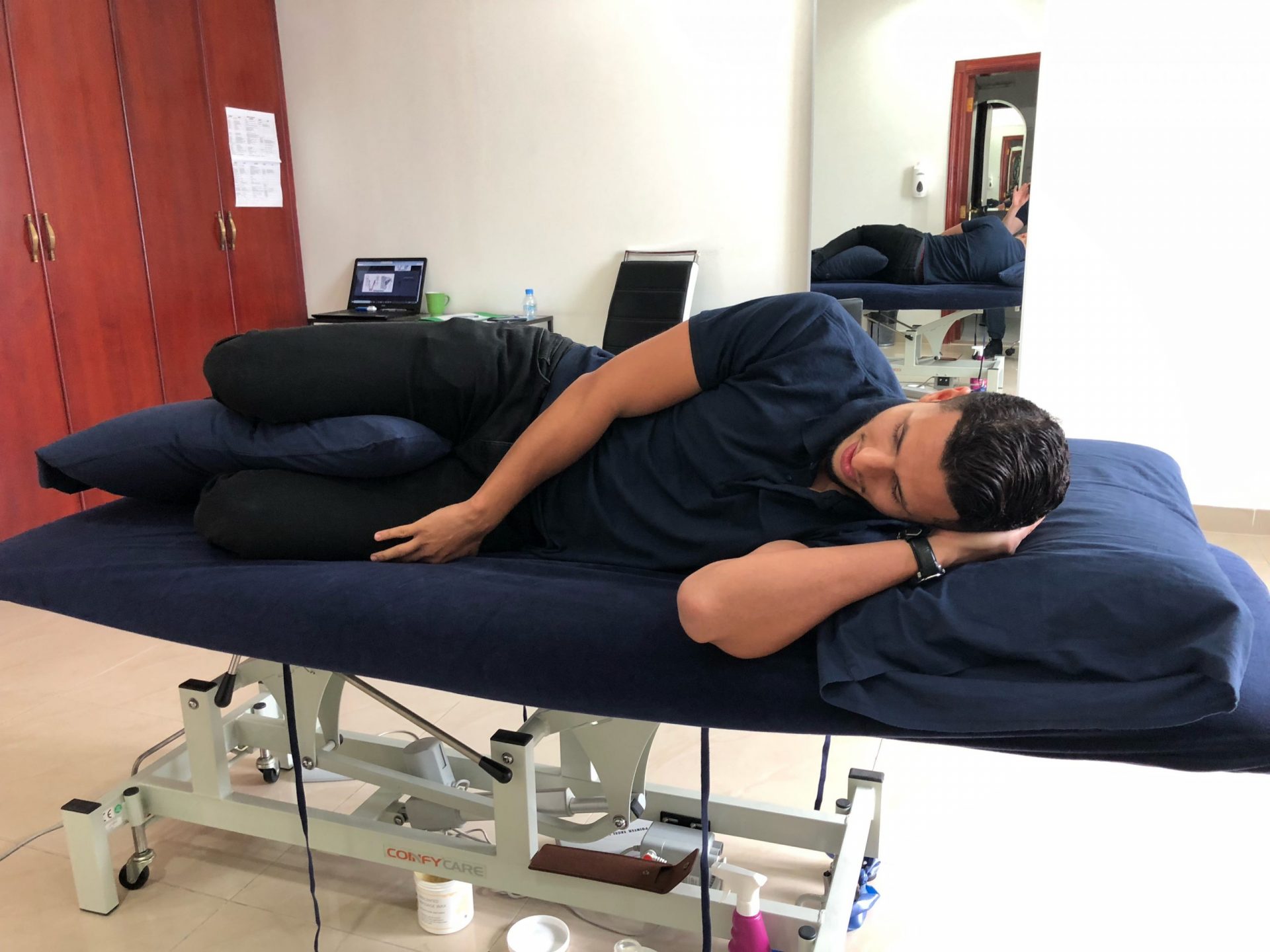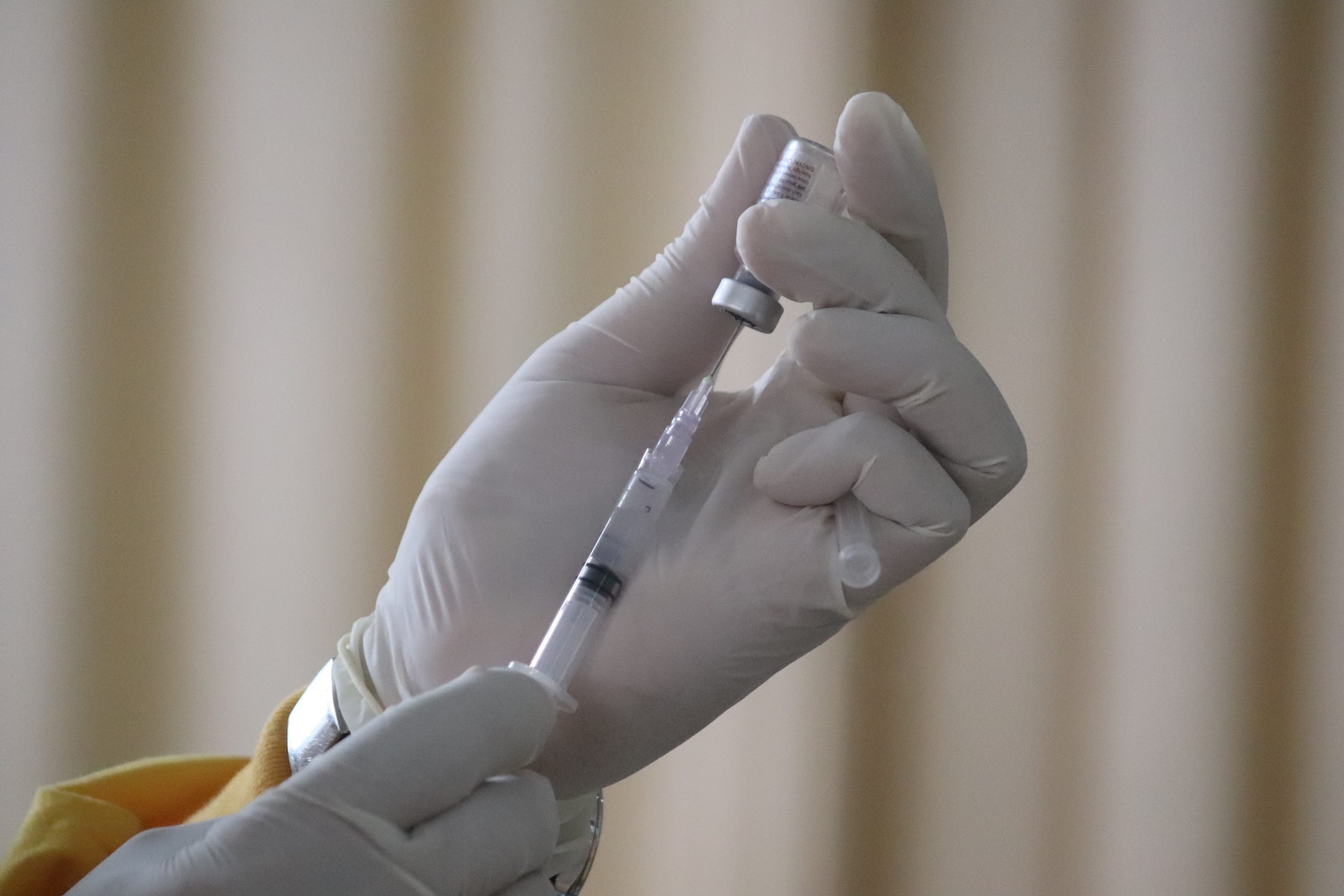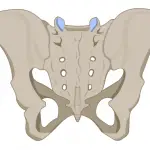Do you feel snapping or snapping in the hip during certain activities of daily living? It is probably a pathology called " coxa saltans " or " snap hip ", commonly known as " jerking hip ". In this article, you will discover everything there is to know about this pathology.
A few words about the jerk hip
hip anatomy
The hip is the joint that connects the pelvis and the femur. It is made up of various structures: bony, musculotendinous and capsulo-ligamentous.
The femur is inserted into a cavity in the pelvis called the acetabulum. It includes a head and a neck which ends at the bottom with bony reliefs: the greater and the lesser trochanter. This is where the tendons insert.
Also, there is a thick aponeurotic layer called "Maissiat's band", "iliotibial band" or " fascia lata ». It serves to envelop the external superficial muscles of the thigh. Beginning above, at the level of the greater trochanter, it ends below at an insertion on the external tuberosity of the tibia.
The hip also has bursae. These are pockets filled with synovial fluid. The latter facilitates the movement of the tendons on the bony reliefs. When these pockets undergo inflammation, we speak of bursitis.
Definition of jerk hip
Le hip jerk is characterized by a hanging or a slam which is felt and observed at the level of the hip. It translates a extra-articular problem linked to movement of aponeurotic structures ou tendons above a bony relief.
Depending on the structure and bone relief concerned, we distinguish different types of hip jerks.
Lateral hip jump
During active flexion of the hip, the band of Maissiat is excessively tense and slips over the greater trochanter. It is the brutal and abrupt "jump" of this strip that defines the jump of the lateral hip.
Anterior hip jerk
Le anterior hip jerk corresponds to a sudden slip of the iliopsoas tendon on:
- a bony prominence of the pelvis ;
- iliopectineal eminence ;
- the femoral head.
The iliopsoas tendon is seen from the anterolateral side of the thigh. It passes into the latter and attaches to the top of the lesser trochanter.
Thus, during the active extension of the thigh, this tendon is "tense". There is a reflection and a sudden change in direction, even a displacement of this tendon above the iliopectineal eminence.
Posterior jerk of the hip
Le posterior hip jerk is defined by a subluxation of the tendon of the long portion of the crural biceps on the ischial tuberosity. This is observed during hyperflexion movements of the hip with the knee in extension.
Trigger hip in children and adults
In 25% of cases, the jerk of the hip exists from childhood due to hyperlaxity of the hip. In 50% of cases, its onset is progressive and is related to overuse syndrome in athletes. In 25% of cases, it appears following trauma.
Symptoms of jerking hip
Snapping hips are not always symptomatic. They are usually recognized by the visible snapping (and palpable for the external jump) and audible from the hip during certain movements. This is particularly the case of the transition from a neutral position to a hip position.
They can be accompanied by pain:
- on palpation in case of bursitis ;
- to resisted contraction in case of gluteus medius tendinopathy ;
- at the level of oldest boy in the event of an anterior jump;
- at the level of the posterior radiating to the back side of the thigh in the event of a posterior jump.
Patients also complain of feeling of dislocation or dislocation at hip level. Discomfort is noticed during certain movements such as walking or climbing stairs.
Causes of jerky hip
This pathology has a female prevalence. In most cases, it appears after 30 years.
We do not yet know the true origin of the jerk of the hip. But there are some probable causes.
- Acquired causes: following accidents, trauma, fractures affecting the hip region, femoral osteotomy, imbalances in muscle balance (due to a neurological deficit for example), failures or errors during tendon removal for ligamentoplasty. Sometimes psychological factors can be associated with it (tics).
- Static Causes: static abnormalities and difference in length of the lower limbs.
- Anatomical causes: skeletal problem (bi-iliac narrowness) or problem of harmony in the muscular balance (the gluteus maximus or gluteus maximus muscle extends and inserts abnormally on the posterior edge of the iliotibial band).
Movements that put a lot of strain on the hip increase the likelihood of this pathology appearing. This is why the patient may have to stop the practice of certain sports activities such as gymnastics, classical dance, judo, football, etc.
Diagnosis of jerky hip
Le hip jerk easily recognized. However, consultation with a health professional remains essential for:
- determine the source of pain as well as problematic cases;
- rule out other possible causes of the symptoms.
The diagnosis is essentially clinical. It consists in studying the functional signs and the physical signs constituting the symptomatology of this pathology. To this end, various tests are carried out:
- specific psoas tests: tensioning and resisted contraction;
- elevation of the patient's leg in a seated or supine position.
Additional examinations may prove useful to confirm the involvement of the jump in the painful symptoms. These include examinations ofmedical imaging :
- x-ray;
- hip arthrography;
- ultrasound;
- to scan ;
- MRI…
Differential diagnosis
A differential diagnosis makes it possible to eliminate possible suspicions of recurrent hip dislocations and spinal pathologies. These can also be the cause of pain in the hip and thigh.
With regard to the anterior push, a differential diagnosis is necessary to eliminate the many possible causes of inguinal pain such as:
- the psoas tendinobursopathy ;
- the pubalgia ;
- the inguinal hernias ;
- degenerative hip injuries;
- la coxarthrosis incipient or proven;
- the dysplasias ;
- conflicts with a hip prosthesis...
Trigger hip treatments: what to do?
Before taking therapeutic measures in the context of hip jerk, it must be certain that it is responsible for the symptoms mentioned by the patient.
The jerk of the lateral hip generally does not require any treatment. However, when symptoms such as pain persist, the following treatments are offered.
- Medical treatment: it allowsrelieve symptoms with analgesics and nonsteroidal anti-inflammatory drugs.
- Conservative treatment aims to reduce tension. It can be based on massage therapy and rehabilitation exercises (psoas stretching and muscle strengthening) for more than six weeks.
- Surgical treatment is offered as a last resort. The most widely used technique is lengthening of the iliotibial band or lengthening of the psoas. Before considering this option, the doctor must inform the patient about the risks of the intervention. Lsensitive epidural anesthesia is recommended to be able to maintain muscle tone and thus maintain control during the procedure.
These treatments are also adopted for the other types of jumps.
References
https://www.orthopedie-roeselare.be/fr/specialisations/hanche/hanchearessaut
http://centre-osteo-articulaire.fr/index.php?page=anatomie-hanche










